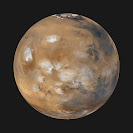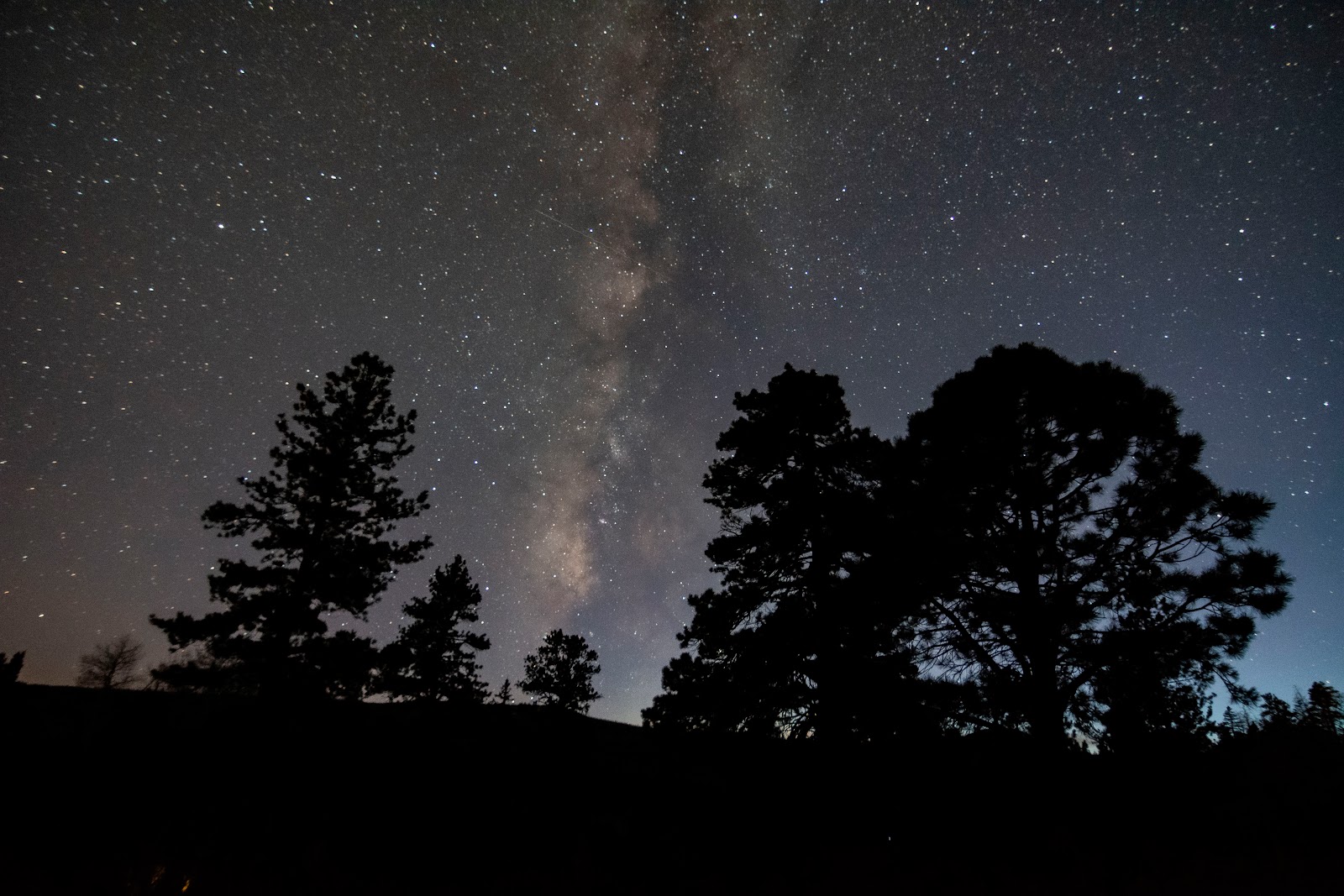Introduction
September was a decent month for stargazing. There were a few cloudy and rainy days, but overall, the skies were clear and the temperatures were pleasant. I had the opportunity to visit Capitol Reef National Park over the last weekend of September. This park has earned Dark Sky Place Certification from the International Dark-Sky Association and is an excellent destination for stargazing. Unfortunately, it rained or was otherwise cloudy every day we were there except for one evening. The stars were numberless, and the Milky Way was bright and easy to see. I imaged the Dumbbell Nebula, Pacman Nebula, the Hercules Cluster, and the Andromeda Galaxy with my smart telescope. I also captured a few astrophotos with my smartphone, all of which I will share at a future date. We also made a quick visit to Bryce Canyon National Park, which has also earned its Dark Sky Place Certification. It was raining all day at Bryce Canyon, and we didn't spend the night, so I cannot give my opinion on the dark sky quality, although it is rated as a Class 1 dark sky on the Bortle Scale, like Capitol Reef.
The temperatures during October will continue to drop, and the nighttime hours will increase. The Orionid Meteor Shower will peak this month. Jupiter will continue to rise earlier, and Saturn will remain an excellent target for telescope views. Mercury and Mars will appear close together this month as they plunge below the horizon shortly after sunset.
 |
| Mercury |
Mercury will be close to the western horizon this month. Due to its low altitude, the innermost planet will be a challenge to spot. A high elevation, such as the top of a mountain, and a clear western view will be required. Mars will be nearby throughout October, with a conjunction occurring on the 19th. Mercury will reach its greatest eastern elongation on the 29th, being approximately 25° from the Sun, but still hugging the horizon. A thin Crescent Moon joins Mercury and Mars on the 23rd.
 |
| Venus |
Due to its brilliance, Venus will be easy to see in the morning hours during October. It begins the month mingling with the stars of Leo but will quickly pass into Virgo. This transition will occur on the 9th. A thin Crescent Moon will join this bright planet on the 19th.
 |
| Mars |
Mars will be hard to spot during October as it lies close to the horizon. Like Mercury, a high elevation and a clear westerly view will help spot this planet. Mars and Mercury will reach conjunction on the 19th with only 2° of separation. A thin Crescent Moon can be found close by on the 23rd. Mars is nearing its solar conjunction and will likely be lost from view for Utahns for the next few months. Observers should look for the Red Planet while it’s still visible!
 |
| Jupiter |
Like Venus, Jupiter will be easy to see as soon as it clears any obstructions along the eastern horizon. At the beginning of October, this gas giant will rise close to 1:00 AM. By the end of the month, this world will be above the horizon before midnight. Like Saturn, Jupiter is a thrill to view through a telescope, revealing the Galilean Moons and the dark cloud bands that span the planet. Several Galilean moon transits will be visible during October. I encourage interested observers to use the Moons of Jupiter and Saturn app for Android or Gas Giants for iOS devices to determine when these transits occur at their location. Both of these apps are free. If an observer is interested in a paid and more comprehensive app, I recommend Stellarium Plus for both Android and iOS, as well as Sky Safari Pro for iOS. The Earth's own Moon will pass close by Jupiter on the 16th this month.
Saturn reached opposition on September 21st and will remain an excellent target for telescope observers during October. Although the rings are not at their best for Earthly views, they will still be visible and will likely excite any observer. Several Saturnian moon transits are visible this month. The apps mentioned above will also give observers additional resources for Saturn. The Earth’s own Moon will pass close by on the 6th.
 |
| Neptune |
 |
| Uranus |
Uranus will continue to be found in Taurus the Bull throughout October. This world will require binoculars or a telescope to view. It can be found just below the Pleiades, which can be used as a guide for locating this dim planet. The Hyades can be found below Uranus. The Moon passes close by on the 10th.
Neptune will continue to follow Saturn through the sky during October. The pair is only 3° apart, but this distance will increase to 4°, from our Earthly view, by the end of the month. Use Saturn as a guide to find this distant planet. A pair of binoculars or a telescope will be needed to see this dim world. The Full Moon will pass close to Neptune on the 6th.
Orionid Meteor Shower
October brings the return of the Orionid Meteor Shower. This shower will peak on the 21st, under a Moon-free sky! Although this isn’t the best meteor shower of the year, the Moon-free sky will allow observers to see as many meteors as possible while in an area free of light pollution. Observers can expect to see approximately 20 meteors per hour on the peak date. These meteors will appear to radiate from Orion, as the name suggests. A zero-gravity chair or something similar will allow an individual to see more of these fast, bright meteors as they streak across the sky. The Orionids are active from October 2nd through November 7th.
Monthly Breakdown
October 05: Moon passes within 4° of Saturn
October 06: Moon passes within 3° of Neptune
October 06: Full Moon 🌕
October 10: Moon passes within 5° of Uranus
October 13: Moon passes within 4° of Jupiter
October 13: Last Quarter Moon🌗
October 19: Moon passes within 4° of Venus
October 21: Mercury and Mars conjunction
October 21: Orionid Meteor Shower peaks
October 21: New Moon 🌑
October 23: Moon passes within 5° of Mars
October 23: Moon passes within 2° of Mercury
October 29: Mercury reaches its greatest eastern elongationOctober 29: First Quarter Moon 🌓
 |
| Now get outside and look up! |
Planet images were taken by NASA.
Andrew vs. the Cosmos image was taken by Jeff Greenland.The Milky Way and Trees image was taken by Andrew Greenland.
Orion, Taurus, and Pleiades image was taken by Andrew Greenland.










No comments:
Post a Comment